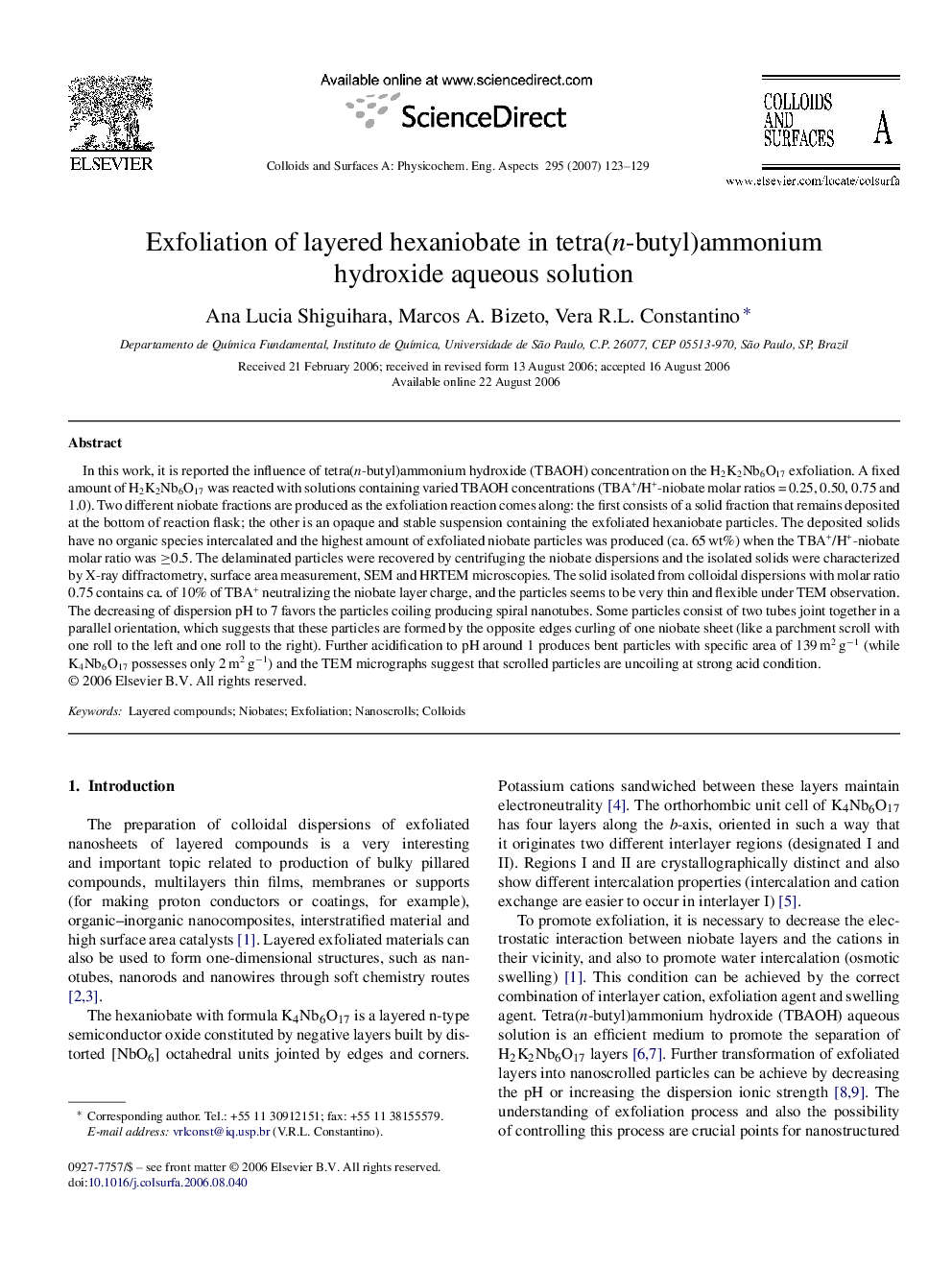| کد مقاله | کد نشریه | سال انتشار | مقاله انگلیسی | نسخه تمام متن |
|---|---|---|---|---|
| 597628 | 1454077 | 2007 | 7 صفحه PDF | دانلود رایگان |

In this work, it is reported the influence of tetra(n-butyl)ammonium hydroxide (TBAOH) concentration on the H2K2Nb6O17 exfoliation. A fixed amount of H2K2Nb6O17 was reacted with solutions containing varied TBAOH concentrations (TBA+/H+-niobate molar ratios = 0.25, 0.50, 0.75 and 1.0). Two different niobate fractions are produced as the exfoliation reaction comes along: the first consists of a solid fraction that remains deposited at the bottom of reaction flask; the other is an opaque and stable suspension containing the exfoliated hexaniobate particles. The deposited solids have no organic species intercalated and the highest amount of exfoliated niobate particles was produced (ca. 65 wt%) when the TBA+/H+-niobate molar ratio was ≥0.5. The delaminated particles were recovered by centrifuging the niobate dispersions and the isolated solids were characterized by X-ray diffractometry, surface area measurement, SEM and HRTEM microscopies. The solid isolated from colloidal dispersions with molar ratio 0.75 contains ca. of 10% of TBA+ neutralizing the niobate layer charge, and the particles seems to be very thin and flexible under TEM observation. The decreasing of dispersion pH to 7 favors the particles coiling producing spiral nanotubes. Some particles consist of two tubes joint together in a parallel orientation, which suggests that these particles are formed by the opposite edges curling of one niobate sheet (like a parchment scroll with one roll to the left and one roll to the right). Further acidification to pH around 1 produces bent particles with specific area of 139 m2 g−1 (while K4Nb6O17 possesses only 2 m2 g−1) and the TEM micrographs suggest that scrolled particles are uncoiling at strong acid condition.
Journal: Colloids and Surfaces A: Physicochemical and Engineering Aspects - Volume 295, Issues 1–3, 1 March 2007, Pages 123–129